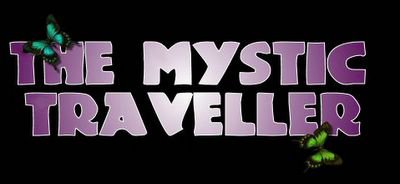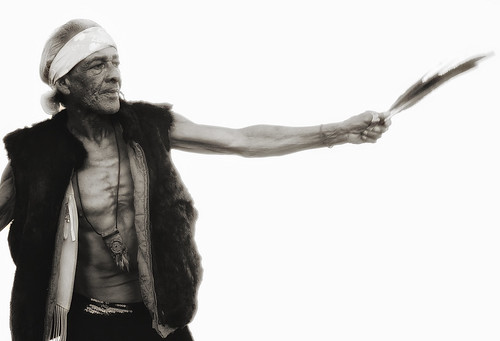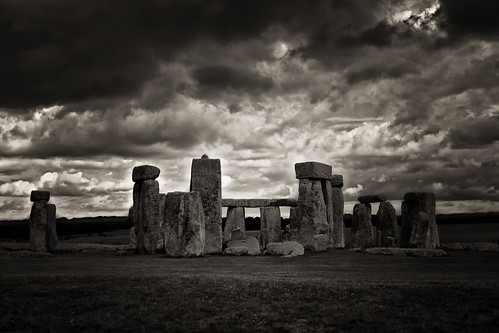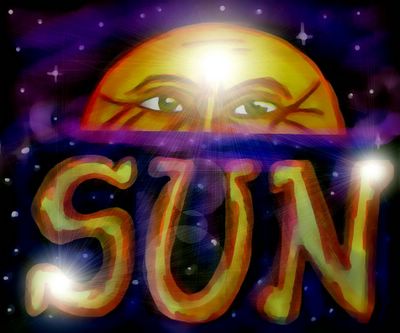September 09, 2010
August 08, 2010
Mystical Stonehenge
by
Unknown
0
comments
![]()
Labels: Archaeology and Anthropology, Paganism, Photography, Sacred Places
January 06, 2010
Pagan Dreams of a Romantic Spirit, Avebury
by
Unknown
0
comments
![]()
Labels: Nature, Paganism, Photography, Sacred Places
August 03, 2009
December 03, 2007
A Truth For All
by
Unknown
0
comments
![]()
Labels: Buddhism, Mystical Thoughts, Paganism, People, Thoughts On Our World
May 30, 2005
Rebirth Or Reincarnation?
I picked out a beautifully produced book, called The Illustrated Encyclopedia Of Buddhist Wisdom. I think I was drawn to it, because I wished to see images of places I had been, as well as to judge the photography. Throughout, were familiar sites that drew me back to my beloved Asia.
The book contained all the rudimentary teachings of the Buddhist path, written clearly and accessibly for the newly introduced. Even for an old horse, it is very beneficial to review the basics, so I glanced over page after page, reminding myself of everything I should have remembered, but had long forgotten.
There was a particularly fascinating section in the book, which quite vehemently disowns the word reincarnation, replacing it with rebirth, instead. Over the years, I have heard both terms used within Buddhist circles. However, to incarnate something, means that there must be a tangible, contained object in which to transfer. Buddhists do not grasp on to the sustainability of a person's personality or soul. The existence of self is a delusion. Rather, a much more subtle process occurs.
The book uses beautifully the metaphor of a candle. As a candle finally starts to burnout, the flickering flame ignites the wick of a new candle. The flame now burns brightly again. The flame could be seen to be the continuation of the old flame. It could also be seen to be the start of a new flame. It exists through causal dependency: Without the passing of the old flame, the new flame could not come into being. It is both, and yet, it is not.
by
Unknown
4
comments
![]()
Labels: Buddhism, Mystical Thoughts, Paganism
December 16, 2004
Monkey Bones & A Charming Buddha

My Naga Monkey Skull Charm
Among the many beautiful wooden, jade and bronze Buddha figures, are also the very devilish-like creations of the Naga people. The Naga people are indigenous to the land that falls on the Indian-Myanmar border. In Assam, there has been a violent struggle for independence, which has made the region particularly volatile and out-of-bounds to travellers.
The Naga used to be ferocious headhunters. As Animists, they have a long tradition of creating unusual totems and necklaces made from animal bones. When I first visited Mandalay, I was particularly attracted to several examples of Naga crafts that were on display at the store. Hanging from the rafters, were several monkey skull necklaces. Being somewhat of a fiend for occultic objects, I was immediately attracted.
Whilst some of the skulls had browned with age, and had even lost some teeth, there was one with an eerie look in his eye; a spider had built a nest within the eye socket, which gave the skull the impression that it was staring. The chord that it was hung-on had long hollowed out bones, with strange magical protection symbols carved into them. The skull was further enhanced with the addition of two long black horns.
I could not resist, and so after some haggling, I agreed on paying $25 for it – a bargain for something so curious. The necklace certainly stimulates conversation when people see it on the wall that it is hung.
At first, I felt a little uncomfortable with him staring down at me, and thought of W. W. Jacobs classic spook tale, The Monkey’s Paw. But, after time, and asking politely for his blessings, I have concluded that a little Naga magic is not necessarily a bad thing to have protecting you!
When I returned to the store on my second Myanmar trip, I was once again attracted to every item on show. If I had a large enough place, and more importantly, a wallet full of money, I would have bought the entire shop. That was, of course, not to be, so I carefully perused items in the hope of discovering the perfect purchase.
As my eyes flitted across the many statuettes, a beautifully painted wooden Buddha, locked inside a glass cabinet, caught my attention. I asked the shop assistant how much it was, and he told me that it cost $50. As is the way with haggling, I immediately started the mind games. Instead of responding to his answer, I continued to walk around, only sporadically returning to the Buddha figure, to reassert silently my interest in it.
After some time, quietly strolling about, I then pretended that I was about to leave. The shop assistant chased after me, and asked me how much I would pay for the Buddha. I replied that I had no idea, and asked him for a lower price. He now dropped it to $40. In response, I said that I would pay $20. He scoffed, as was expected, but again lowered the price to $35. Again, I pretended to act as if I was leaving. He then told me that I could have it for $30, at which point, I said that I would think about. I left the store, and headed to a teashop further down the street.
After half an hour, I returned with my trishaw driver, and asked the man for a final price. He rolled his eyes and then offered it for $25, which I happily agreed to.
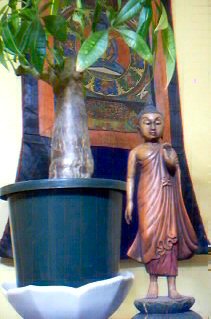
My Charming Buddha
Haggling is always an alien practice for me, even though it is a widely used custom in many countries throughout the world. I have always held the view that a traveller should consider not only the value of the item that they may be interested in, but also the circumstances of the seller. Some people visit developing countries and will fiercely fight over literally pennies – pennies that can make a huge difference to someone locally. It has to be about balance and fairness.
After returning back to Japan, I unwrapped my newly acquired Buddha, who would be treasured like the others in my collection. He now stands rather handsomely upon my television. Unfortunately, though, because of the dryness of the air in my apartment, compared to the constant humidity of Myanmar, the wood that the Buddha is made of, has started to split apart from his face down to the lotus beneath his feet, and it looks as if he will break entirely apart at some point! However, he will remain loved and appreciated, whatever state he may end-up.
by
Unknown
1 comments
![]()
Labels: Archaeology and Anthropology, Buddhism, Mystical Thoughts, Paganism, Thoughts On Our World
December 06, 2004
Pagan Ritual At The Rollrights
At that time, I belonged to a local Wicca group, who I shared many interesting celebrations with. Perhaps, the best of these occurred at the Rollrights - an ancient stone circle in Oxfordshire, that was constructed 3000 BC. Unlike Stonehenge, which authorities restricted people from entering, we were given permission from the owners of the land to perform our ceremony.
Over forty Pagans from various traditions, such as Druids, Nordics and Wiccans, convened to celebrate Lughnasad (or Lammas), a Celtic festival which gives thanks to the Sun God, and the harvest provided for the winter months ahead.
As twilight gathered the last remnants of light, and the moon glided high in the sky, several bats accompanied us, creating an almost cliched scene. A fire was lit at the centre, with a large cauldron above it. The cauldron has always been an integral part of Celtic worship, representing the source of creation, in the form of a mother's womb. It is also symbolic for transformation and rebirth, so offerings of herbs and incense are combined within it.
The ancestors who built the circle, were invoked to join us, and there was an almost tangible sense of them being present, whether it was in the flickering shadows of the stones, or in our stimulated imaginations.
We danced and chanted, rotating round and round in a large circle, and thoroughly enjoying the ambience of the moment. There was nothing evil in what we were doing. The Devil had no part in it. We were simply celebrating the cycles of nature that allow life to continue.
For just a few hours, it was possible to be taken back to the ancient paths that had been practiced for millennia, but have since faded away into obscurity. On that evening, as magic permeated the air, those ancient stones were restored with their original purpose.
by
Unknown
0
comments
![]()
Labels: Mystical Thoughts, Paganism
October 11, 2004
Ayahuasca Ceremony In The Amazon
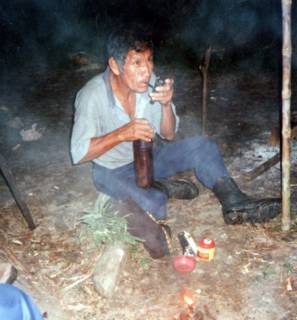
Our Amazonian Shaman. The Ayahuasca is in the bottle.
Photography By David Shiel
Of course, snakes remain a priority of concern, requiring the jungle trekker to take precautionary measures, such as stepping on to, rather than over fallen trees. However, the flora can also present risks. There are trees that have piercing spines and poisons; some even having intriguing symbiotic relationships with dangerous fire and bullet ants, that go into fierce battle against any intruder that touches the tree they inhabit.
by
Unknown
0
comments
![]()
Labels: Mystical Thoughts, Paganism, Travelogues
September 27, 2004
The Dark Room
We left quickly, and found confirmation from my Pagan friend, that we had correctly discovered the room she had spoken of. Both Graham and I took turns to stand in that horrible space by ourselves, to test our courage. However, it did not take long before either of us wished to evacuate from it. There really was something dark lingering in there. Dangerous? Perhaps, not. But, the feeling was very real.
by
Unknown
0
comments
![]()
Labels: Mystical Thoughts, Paganism, Thoughts On Our World
September 19, 2004
The Cycle Of Life In Paganism & Buddhism
by
Unknown
0
comments
![]()
Labels: Buddhism, Mystical Thoughts, Paganism, Thoughts On Our World
September 04, 2004
by
Unknown
0
comments
![]()
Labels: Art By El-Branden Brazil, Paganism
September 01, 2004
Musings On Paganism
A central aspect that pervades throughout many of the aforementioned traditions is the notion of duality - the understanding of opposite forces within nature. Examples of this are light and darkness, good and evil, white and black, matter and anti-matter, and so on. As the Tao symbol, the Yin and Yang demonstrates so clearly, all things require their parallel, and in each there is a little of the other. In combination, they create the whole.
For Pagans, the acceptance of both the masculine and feminine aspects that exist in nature is imperative for accurate understanding of the forces that lay hidden. Both genders are represented as equal and respected unconditionally for both their strengths and weaknesses. This hardly corresponds to the patriarchal traditions of Christianity, Islam and Judaism that dominate today. It comes as no surprise, that many leading Feminists, such as Germaine Greer, have been drawn to Paganism.
In recent years, the definition of the word pagan has gone through somewhat of rehabilitation after 2000 years of negative application. When the Christian church was established in Rome, all beliefs contrary to the new religion were considered sinful and anti-Christian. Therefore, pagan became an alternative term for heathen.
During the rise of early Christianity, a conflict with the ancient European traditions was inevitable. By its very nature, Christianity requires conformity and repression of individuality, by following the precepts of Christ correctly, in the hope of attaining a place in heaven. There is no room for rebellious behaviour. In contrast, apart from being polytheistic by nature, European Paganism was often encouraging towards hedonistic practices: something, which contradicted the strict doctrines of the Church. Paganism promotes an appetite for life, whilst Christianity and its sibling religions promote happiness only achieved in the afterworld.
Yet, for all its opposition to the old religions, in its zeal to convert the Pagan masses, it adopted many of their festivals as a coax: Yule, Ostara and Samhain became Christmas, Easter and All Saint’s Eve (Halloween), to mention but a few. Such seasonal symbols as the Christmas tree, holly and mistletoe, the Easter egg, the May Pole and even Santa Claus can be only fully explained by having an understanding of pre-Christian traditions. The Church’s policy obviously succeeded in attracting the polytheists to the monotheistic lifestyle.
However, towards the end of the 18th Century, a fascinating social phenomenon occurred in Europe during the peak of the Age of Enlightenment, and continued to persist throughout the 20th Century. As scientific discoveries were leading to breakthroughs in our understanding of the universe, the firm grip of Christianity seemed to slacken and continues to do so today. The scientific theories of Galileo, Newton, Darwin and others, contradicted many of the Church’s core beliefs, which it had propounded for centuries. Through the cracks of uncertainty that appeared between the Christian world of faith and the scientific world of scepticism, a rebirth of Paganism emerged.
The Romantic Movement was a reaction to the flux that society was going through. Whilst many Romantics continued to hold on to Christianity, others began to resurrect the traditions of the ancients, albeit in a dreamy approximation. Combined with this, was a rejection of ordered and controlled nature. It was replaced by a passionate desire to observe the world at its wildest, high up in the rugged mountains and deep in the overgrown forests. This is exemplified in the work of the German painter, Caspar David Friedrich and also the English poet, William Wordsworth, who writes in ‘The World Is Too Much With Us’:
The world is to much with us; late and soon,
Getting and spending, we lay waste our powers:
Little we see in Nature that is ours;
We have given our hearts away, sordid boon!
This Sea that bares her bosom to the moon;
The winds that will be howling at all hours,
And are up-gathered now like sleeping flowers;
For this, for everything, we are out of tune;
It moves us not – Great God! I’d rather be
A Pagan suckled in a creed outworn;
So might I, standing on this pleasant lea,
Have glimpses that would make me less forlorn;
Have sight of Proteus rising from the sea;
Or hear old Triton blow his wreathed horn.
While Wordsworth was not a Pagan, and sadly lost this intuitive feeling, as he grew older, there were other individuals who took this expression to the extreme. People such as the French occultist, Eliphas Levi, the Russian mystic, Madam Helena Petrovena Blavatsky, Gurdjieff, Gerald Gardner and of course, Aleister Crowley. This was also a period when ideas from exotic lands became accessible for the first time. Ancient Asian creeds had instant novelty appeal for the intellectual circles of the West. The old traditions inspired a creative and modern interpretation of their mythologies to manifest in the new social dynamic of the era: And one which is perhaps still going on.
Secret societies grew out of the more secretive society of the repressed Victorian Age: Groups such as The Order of the Golden Dawn, The Order of the Druids, Ordo Templi Orientis, The Brotherhood of the Rosy Cross (Rosicrucian) and The Theosophical Society, were all conceived out of an active response to the times: And all claiming to hold occultic wisdom hidden from the eyes of the uninitiated. They enchanted radicals, intellectuals and artists from all kinds of backgrounds, such as the Irish poet, William Butler Yeats, who was an avid member of the Golden Dawn and a supporter of the Theosophists. Such members allowed for a sense of legitimacy to be attached to these groups. The Romantic Movement had evolved a social tolerance towards creative ‘eccentricity’ and ‘excessiveness’, so membership to one of these organisations was often taken as such by sceptics.
It is necessary to see modern European Paganism against this background, if it is to be fully understood. While modern Paganism (or Neo-Paganism) claims to have a long heritage that goes back to the distant past, it is preferable, and prudent, to view it as a separate entity from ancient Paganism, standing on its own terms and merits as a new religion. It is true that the premises on which it is based have roots that go back to our ancestors, but the design and presentation of today’s Paganism, is a modern construct that originates from Romantic ideals and interpretations of the past. This reality should not take away the value of the Pagan Path, but rather remove the misconceptions and tenuous assumptions that consume the perceptions of some modern Pagans. The Paganism of the present should be appreciated as a movement of dynamic creativity. Similar to the Creation mythology of the Australian Aborigines, Neo-Paganism is dreaming itself into existence. This is its strength and appeal, as it has flexibility and a unique openness alien to the dominant world religions.
by
Unknown
0
comments
![]()
Labels: Mystical Thoughts, Paganism
August 03, 2004
A Day With King Arthur
My girlfriend at that time was Poppy Palin, who is now a very respected Pagan artist, tattooist, writer and teacher.
The gathering consisted of several members of the The Bardic Order Of Druids. This order is led by a fascinating man, who calls himself Arthur Uther Pendragon, and strongly believes that he is the reincarnation of the original famous king. This should, of course, set off alarm bells of crankiness. However, anyone who has had a chat with him, will discover a very intelligent, thoughtful, charismatic character.
For many years, Arthur has led a crusade against the British government for not allowing Pagans to celebrate freely, without restrictions at the Stonehenge site. He has even taken the complaint to the European courts, charging that the banning of Pagan rituals within the stone circle, was an infringement of a person's individual right to worship. His efforts have paid off, with the authorities now allowing controlled gatherings when necessary.
He has also been involved in the fight to protect Britain's diminishing countryside, and has made several stands against road developments and woodland destruction.
After the very cold, but pleasant Druid ritual, which took place outside of the stone circle, due to the enforced restrictions at that time, Poppy offered to give Arthur a ride. On the journey back, we dropped off at my parent's home. I will never forget how uncomfortable I felt informing my mother and father that King Arthur was visiting! However, both my parents were enormously interested in him, and we all had a very pleasant afternoon.
A couple of years after my arrival in Japan, my parents unexpectedly met Arthur at Avebury Stone Circle, in Wiltshire. They recorded a message from him, wishing me good fortune from the Isle Of Avalon to the Land of the Rising Sun!
by
Unknown
0
comments
![]()
Labels: Paganism
